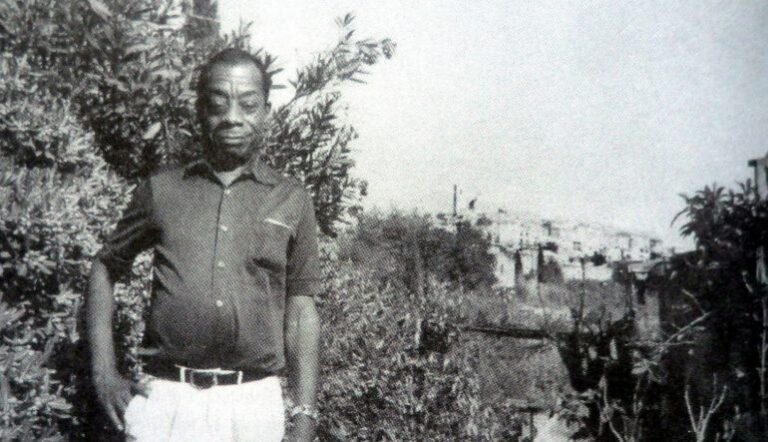Svetlana Alexievich’s Verbatim Theater

It is difficult to explain what makes Svetlana Alexievich’s work so moving. Hardly any of the words in the books that bear her name are her own. Hardly ever does she allow her authorial voice to make itself heard. Rather, in the literary equivalent of collage, Alexievich writes by arranging others’ words. At times, she seems to nudge her interlocutors, provoking them, asking them questions or contradicting them. But we only become aware of this behind the scenes maneuvering in her interviewees’ rare outbursts, which she faithfully records alongside their tics and mannerisms. Similarly, if we sometimes come to suspect that she must dictate the flow of the conversation, asking productively open-ended questions, her texts are silent about how or when she might do this, recording only the answers that are spoken back to her. Those whose lives she documents seem to come out of nowhere and to speak into the void.
Her admirers variously call Alexievich a journalist, an essayist, an oral storyteller, a memorialist, a purveyor of “polyphonies,” and a portraitist. Even the simple label of “writer,” however, seems a poor fit for what Alexievich does, since her work is not writing in the traditional sense (though one would be hard-pressed to claim that it is anything but). In the United Kingdom, her best-known book, which inspired the award-winning HBO mini-series Chernobyl, is sold under the title Chernobyl Prayer: A Chronicle of the Future. The cover of the 2016 Penguin Modern Classics edition, translated by Anna Gunin and Arch Tait from the revised 2013 Russian edition, proudly announces that the author is a “Winner of the Nobel Prize in Literature.” In the United States, however, the same much-admired work is sold via Keith Gessen’s 2005 translation—of the 1997 Russian first edition—for Dalkey Press as Voices from Chernobyl: The Oral History of a Nuclear Disaster (distributed by Picador since 2006). Before Alexievich’s Nobel win, the book was praised for having won the National Book Critics Circle Award in Nonfiction. A prayer, a chronicle, or an oral history? Literature or nonfiction? A literal translation by a UK-based team or a communicative one by an US-based fellow journalist and writer? It is possible to shrug off the difficulties of accurately characterizing Alexievich’s prose by asking any of these questions.
Even the Nobel committee who awarded Alexievich the prize for literature in 2015 found its winner’s books difficult to describe. When, on December 7, 2015, she introduced Alexievich’s prize lecture, Sara Danius, the Permanent Secretary of the Swedish Academy, spoke of the “double perspective” of Alexievich’s work: “On the one hand, [Alexievich] wants to talk about the Red Individual, and all the formative experiences. On the other hand, she waits until the true human experience begins to reveal itself, overriding clichés and spun versions. Here, somewhere, is the crux.” Danius tried to suggest that Alexievich’s books—whether they are about individuals who lived through the horrors of the Second World War as children (The Last Witnesses, 1985), or about the million Russian women who volunteered to fight on the conflict’s many frontlines (The Unwomanly Face of War, 1997)—are all, in some sense, studies of what Danius calls “the Red Individual” and what Alexievich herself, in Second-Hand Time (2013), terms the “remaking [of] the ‘old breed of man,’ ancient Adam. . .Perhaps it was communism’s only achievement. . .Homo sovieticus.” With this tongue-in-cheek classification, to which Denius alludes, Alexievich is able to claim that she is writing the social and cultural “chronicle” of a people who “are both like and unlike the rest of humanity—we have our own lexicon, our own conceptions of good and evil, our heroes, our martyrs. We have a special relationship with death.” Her subjects are the individuals who understand themselves politically, socially, and culturally as former Soviets, past “participants” in the same “socialist drama,” if not fellow citizens of a former empire.
Denius struggles to explain how this can be—as she says, Alexievich is in fact more interested in “human experience” than in types. She “wants to converse with people, and I mean this in the deepest and most comprehensive sense. She craves the speech of living people, that which disappears when the people in question no longer exist.” Faced with these two contradictory lenses though which to view Alexievich’s work, however, Danius at last is forced to shrug: “We are thus confronted with a choral work of voices stitched one upon another. This is Alexievich’s great achievement.” Are we meant to focus on the unity of this mixed-metaphor, and on the patchwork Soviet chorus, or are we meant to consider each individual voice that Alexievich records? Like her translators and publishers, the Nobel committee struggles with the question.
With no disrespect to Nobel officials, a more useful way of thinking about Alexievich’s projects might be to consider such questions not as problems that derive from the writer’s compositional practices, but as aspects of the form with which she is working: verbatim theater. In fact, said more forcefully, it is only as verbatim theater that books like Alexievich’s Chernobyl Prayer/Voices from Chernobyl begin to make sense.
A descendant and distant relation of the much older genre of the chronicle (history) play, verbatim theater became popular within the larger context of the documentary theater movement in the 1980s and 1990s, after directors like Peter Cheeseman pioneered the stage use of recorded interviews. Described in simplified terms, this type of drama focuses on individual accounts in order to make sense of collective—often traumatic—experiences. One might take as an example the work of the playwright Anna Deavere Smith, one of the form’s best-known practitioners, whose 1992 play, Fires in the Mirror, is an account of the 1991 Crown Heights riots. Fires transforms a hundred plus interviews with eyewitnesses into twenty-nine monologues that, as Smith puts it, locate the collective “American character. . .in the gaps between the places and in our struggle to be together in our differences.” Or, just as powerfully, one may point to the Tectonic Theater Project’s 2000 play, The Laramie Project, which comprised a series of vignettes based on the theater company’s interviews with individual townspeople from the titular city in Wyoming, attempting to understand how they collectively remembered the events surrounding the murder of Matthew Shepard, the gay twenty-one-year-old University of Wyoming student who was tortured outside the town on the night of October 6, 1998. There are many other examples. Like Alexievich’s work, properly speaking, such plays function neither as simple biography nor as personal narrative. Rather, they are dramatizations of individual responses to historical events that, arranged together, begin to suggest a collective response to trauma. By offering such a response, playwrights working in verbatim theater aim to resist the familiar, monolithic, official accounts in which the past is often codified. They recreate a zeitgeist so as to reject sanitized history.
In Alexievich’s Voices from Chernobyl/Chernobyl Prayer, the necessity of dramatizing the events surrounding the explosion of the number four reactor at the Chernobyl Nuclear Power Plant on the night of April 26, 1986 seems nothing if not obvious. In the immediate aftermath of the disaster, as various voices in Alexievich’s text suggest, Soviet authorities launched a campaign of misinformation hoping both to shift blame and to hide the true scale of the damage. (In one of the last monologues in the book, feeling the need to justify himself, Vladimir Ivanov, the former First Secretary of the Stavgorod Regional Party Committee, shouts in exasperation: “In the papers—on the radio and televisions—they were yelling, Truth! Truth! At all the meetings they demanded: Truth! Well, it’s bad, it’s very bad. We’re all going to die! But who needs that kind of truth?”) At the time of Alexievich’s writing, the campaign was still ongoing, as, to some degree, it is ongoing now. (Last year, for example, after the HBO series based on the book aired, a number of media outlets in Russia expressed criticism of the project, suggesting that the American series sought to discredit the official version of events and to belittle the patriotism of the Soviet people who sacrificed their lives to contain the nuclear threat. As the Guardian reported in June of 2019, in response to the series, “Russian state TV is set to air its own drama about the deadly 1986 Chernobyl disaster—but unlike the HBO series, which has transfixed viewers around the world, this version will claim that a CIA spy was present for the worst nuclear accident in history.”)
Alexievich also dramatizes history because, as she insists, we can only understand events of this magnitude by recasting them on a human scale. In her Chernobyl book, she begins with simple facts. Since the Chernobyl powerplant was located only ten miles from Ukraine’s border with Belarus, today “one out of every five Belarussians lives on contaminated land. This amounts to 2.1. million people, of whom 700,000 are children. . . In the Gomel and Mogilev regions, which suffered the most from Chernobyl, mortality rates exceed birth rates by 20%. . .23% of [Belarus’] territory is contaminated.” Alexievich then, however, labels this information “historical notes.” The collective implications of the disaster are too large to think through; they flash through the mind only as marginalia. So, instead, Alexievich turns to the things that do register in the minds of survivors and witnesses. She offers “monologues” of individual experiences of Chernobyl. We are presented with meditations on “why people remember,” on “the ‘walking ashes’ and the ‘talking dust,’” on “how we can’t live without Tolstoy and Chekhov,” on “what St Francis preached to the birds”—whatever her interlocutors wish to speak about when they are prompted to talk about Chernobyl. Some monologues are “without a title: a scream,” or “in two voices: male and female.” Some are on the “eternal accursed questions: ‘What is to be done?’ and ‘Who is to blame?’” Memorably, one monologue even offers advice “on eating a radioactive sandwich with someone so as not to be ashamed” (the monologue titles quoted here are taken from Gunin and Tait’s more literal translation for the UK edition).
As monologist after monologist speaks his or her part, we come to understand that Chernobyl isn’t simply one thing, or even one place. For one person, it is “the equivalent of 350 atomic bombs dropped on Hiroshima.” For another, it is “just where you lived. We tore plums off the trees, caught fish, the pie there is incredible. And breams—we dried them to eat with beer. . .We played soccer. We went swimming! Ha.” As the wife of one of the liquidators puts it, “it’s impossible to live with Chernobyl because you don’t know what it is. They say, ‘Chernobyl,’ and they write, ‘Chernobyl.’ But no one knows what it is.” In his monologue, Sergei Sobolev, the deputy head of the Executive Committee of the Shield of Chernobyl Association, makes this idea even clearer: “someone said to me, or maybe I read it, that the problem of Chernobyl presents itself first of all as a problem of self-understanding.” As we come to realize, by describing their experiences of Chernobyl, each speaker tries to understand something—and to tell us something—about their life, about their private sufferings, their individual joys, and how they see themselves. None of the speakers, however, can help us come any closer to defining the disaster. As Nadezhda Burakova, “resident of the village of Khoryniki,” insists, “Chernobyl is a metaphor, a symbol.” It stands for nothing, or everything.
To the fatalists, it is a sign of the futility of all human endeavor and makes possible the nihilistic “freedom” felt by a nameless forager living in the contaminated “Zone.” “The life of man is like grass: it blossoms, it dries out, and then goes into the fire,” he tells Alexievich, paraphrasing Ecclesiastes. To the anxious, it is a rumor, like the personification, “painted full of tongues,” that speaks the Induction in Shakespeare’s 2 Henry IV: “In Minsk they washed the trains and inventories. They’re going to transfer the whole population to Siberia. . .It wasn’t an accident it was an earthquake. . .There are now pike in the lakes and rivers without heads or tails. . .Children born in three or four generations will be Einsteins.” To the religious, it is an icon to kneel before: “We’d see a woman on a bench near her house, breastfeeding her child—her milk has cesium in it—she’s the Chernobyl Madonna.” Not even the stylized Greek chorus of soldiers, peasants, and children, whose collective polyphonies punctuate the monologues, can explain it. Like everyone else, they are distraught. They whimper and curse. They point fingers. They remark on the “graves—. Graves everywhere.” They ask “do people have souls? What kind? And how do they all fit in the next world?” They offer no answers.
Instead, as in other instances of verbatim theater, Alexievich replaces monolithic history with individual thoughts and conversations, gossip and jealousies, friendship and love, and all the things, big and small, that make up the collective world of human social relations. In her hands, Chernobyl becomes a microcosm of every other place in the URSS, with its mythologies and Madonnas, its thieves and theologians, its devoted and its dying. “The Solitary Human Voice” who speaks the epilogue movingly makes this point when she recalls not just the unspeakable, inhuman way in which her husband, a first responder, turned into a “monster” as a result of radiation poisoning—something so fearful to behold that “when we buried him, I covered his face with two handkerchiefs. . .One woman fainted”—but by also recalling her intense desire for him: “I knew his whole body by heart, all of it, I kissed all of it. Sometimes I’d dream that I was part of his body. . .Even in our last month. . . I loved him. . . They brought me the urn. I wasn’t afraid, I felt around with my hand, and there was something tiny, like seashells in the sand, those were his hip bones.” She insists: “I wouldn’t change anything in my life, even if someone had told me, from above.” The viewpoint of “Valentina Panasevich, wife of a liquidator,” cannot be said to be representative. Nevertheless, in Svetlana Alexievich’s book-length play, it tells the reader everything he or she might need to know about Chernobyl.
This piece was originally published on February 20, 2020.


